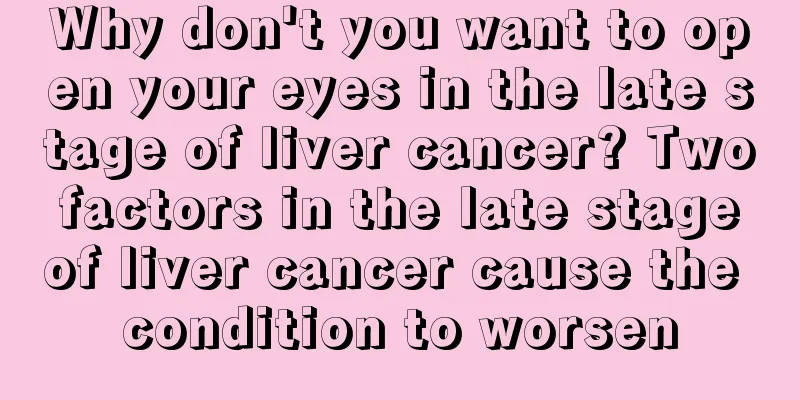What is the mole-like black spot on the face called

|
The main reason for the appearance of mole-like things on the face is pigmentation. The causes of this pigmentation may be congenital or acquired. For example, if exposed to ultraviolet rays from the sun, frequently facing computers, and frequently using some electronic devices, this phenomenon may be caused. For women, if there is an endocrine disorder, such symptoms may also be caused. What causes freckles? 1. Ultraviolet rays It stimulates the melanin in the skin and induces skin lesions such as freckles. Even on cloudy days, the "ultraviolet rays" are still strong. Ultraviolet rays can cause skin darkening, aging, and wrinkles. Human skin's response to ultraviolet rays causes redness, tanning and increased thickness of the skin's epidermis in acute reactions, and leads to skin aging in chronic reactions. In the summer, if you still want to have fair and flawless skin, you should do a good job of sun protection, especially when the UV index reaches 7 or above, it is more likely to damage the skin. You should strengthen sun protection and don't be afraid of trouble and cause regret in the future. 2. Certain photosensitive foods Certain foods are also the root cause of skin darkening. Foods rich in metal elements such as copper, iron, and zinc have this disadvantage. Because these metal elements can directly or indirectly increase the amount and activity of substances such as tyrosine, tyrosinase and dopamine quinone that are related to melanin production. These foods mainly include animal liver, animal kidney, oyster, shrimp, crab, beans, walnut, black sesame, raisin, etc.; eating too much potato, sweet potato, celery, leek, coriander, etc. can easily cause spots after exposure to ultraviolet rays; for example: red beans are also a very photosensitive food, carrots, papaya, citrus, mango, etc., foods rich in B-carotene, because they contain too much yellow pigment, are more likely to have pigmentation or a yellowish complexion. 3. Smoking and drinking Both smoking and drinking are harmful to the skin. If you pay attention, you may find that people who smoke have a darker complexion and darker lips. This is because smoking can cause pigmentation. If you add regular drinking, it will put a burden on the liver and it will easily show up on the skin. In addition to darker skin, spots are prone to appear on the cheeks, and the pigmentation will deepen with age. 4. Certain diseases Many diseases can change the normal skin color, making it darker or even causing spots. The most common ones include endocrine system diseases, chronic wasting diseases, malnutrition diseases, etc. These diseases may cause the skin to turn brown or dark brown, which will be more obvious in exposed areas such as the face, back of the hands, joints, or areas that are under pressure and friction. For example, chronic liver disease may induce chloasma on the face or darkening of the area around the eyes. In addition, the melanin of melanosis patients is mostly accumulated on the face, especially on the forehead, cheeks, behind the ears and neck, which is very obvious. Another type of disease is skin diseases, especially skin diseases caused by allergies to certain foods, such as seafood, raw onions, raw garlic, chili peppers, peppers, leeks, wine, fish, shrimp, kelp, chicken, duck, pig's trotters, pig's head and other foods. Due to individual differences, they may also induce skin allergies in some individuals, resulting in rashes and finally leaving pigments to make the skin darker. 5. Certain medications Many drugs can change the normal skin color. About 10% of patients taking quinine develop blue pigment spots on their faces. Among sedatives, chlorpromazine poses the greatest threat to skin color. Those who take it for a long time will develop butterfly spots on their faces and necks, and brown-gray, light blue or light purple spots on their arms and other parts of their bodies. In addition, repeated use of mercury-containing ointments can also leave brown pigmentation on the affected area. There are more anti-cancer drugs that cause skin changes, such as myleran can turn the skin color into brown-red, bleomycin can cause melanin accumulation, and so on. |
<<: A black spot was left after being stabbed by a pencil
>>: Clothing taboos for people with fat upper body
Recommend
How to get a low-lying placenta up? What to do if the placenta is low?
Placenta previa is quite dangerous for pregnant w...
Can nasopharyngeal cancer be inherited by the next generation?
Is nasopharyngeal carcinoma hereditary? This is w...
The most effective way to slim your nose
The question about the nose is raised by many peo...
Can I get cervical cancer during pregnancy? What should I do if I get cervical cancer during pregnancy
Cervical cancer is a disease that is extremely ha...
What can’t be placed next to the refrigerator
Refrigerators are one of the most common househol...
Should I wake my sleeping baby up to feed him?
When it comes to feeding babies, different people...
What disease is caused by thick yellow tongue coating?
Thick yellow tongue coating is a symptom that man...
Are all colon tumors malignant?
Colon cancer is a common malignant tumor disease,...
Can malignant brain cancer be cured?
Brain tumor is one of the more serious brain dise...
Why are eyes afraid of light? How to prevent eyes from being afraid of light?
We usually find that when our eyes encounter stro...
Cold hands and feet and sweating
Regarding the problem of cold hands and feet that...
How to prevent mosquito bites
When summer comes every year, mosquitoes begin to...
Why do brain gliomas recur?
Why do brain gliomas recur? One reason is that th...
What should you avoid in your diet for glioma
Brain glioma directly threatens the patient's...
Effects of coffee on the stomach
Our stomach is an important organ for digestion i...









